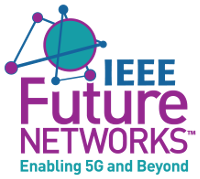IEEE FUTURE NETWORKS SUMMER SESSION FOR YOUNG PROFESSIONALS - 2019

This one-day session provides an opportunity for Young Professionals or knowledge workers to better understand the 5G mobility ecosystem. 5G may be described as a network of networks with applications and services that may transform several adjacent industries. This session is designed to give attendees the opportunity to learn about 5G and Beyond. Prior knowledge of the mobility ecosystem is not required.
The IEEE Future Networks Education Working Group (WG) provides recurring winter and summer sessions where speakers from industry, government, or academia discuss diverse topics related to technology, business, governance, regulatory, etc. The intent is to provide the attendees with an appreciation of the technologies, issues and the key benefits. Collaboration and the exchange of ideas from different perspectives are strongly encouraged.
Please contact IEEE Future Networks Education WG https://futurenetworks.ieee.org/about/technology-roadmap#scope and the Greater Washington DC IEEE chapters for additional information https://r2.ieee.org/washington/ or https://r2.ieee.org/nova/
Date and Time
Location
Hosts
Registration
-
 Add Event to Calendar
Add Event to Calendar
- George Mason University
- 3351 Fairfax Dr
- Arlington, Virginia
- United States 22201
- Building: Van Metre Hall
- Room Number: 113
- Click here for Map
- Contact Event Host
- Co-sponsored by Northern Virginia Chapter of Communications Society
- Starts 29 July 2019 12:37 AM UTC
- Ends 06 September 2019 03:55 AM UTC
- Admission fee ?
Speakers
Dr. Ahmed Kausar
Antenna Design for 5G Back-Hauling & 5G Back-Hauling Requirements
5G networks are expected to support multiple Gbits/s of data-rates. There is not ample bandwidth available at lower frequency bands. Therefore, mm-Wave spectrum is expected to be used for 5G networks. Verizon and AT&T have already conducted successful test at mm-Wave spectrum and Verizon is expected to launch 5G networks in 30 cities by end of 2020. While mm-Waves provide impeccable speeds, high path loss and absorption by atmospheric particles are the key challenges of mm-Wave spectrum. Smart adaptive beam-forming antennas can mitigate these challenges by improving signal to interference noise ratio. Smart antennas have the capability to form beam in accordance with the environment. In the talk I will be covering various scenarios for practical implementation of 5G networks and use of smart antenna for 5G back-hauling. Different 5G antenna design topologies will also be discussed.
Biography:
Ahmed Kausar is working as a Phased Array Antenna Engineer at VT iDirect. He has been actively researching in the area of antenna design for the last ten years. He has a PhD in Electrical Engineer from Boise State University, his research is focused on antenna design for next generation communication systems. He is author of various technical papers and he holds a patent on reconfigurable antennas for millimeter-waves.
Dr. Liling Huang
Microgrid 101
The world’s power systems are beginning to decentralize, decarbonize, and democratize. It is driven by the need to keep low electricity rate, replace aging infrastructure, improve grid resilience and reliability, reduce carbon footprint to mitigate climate change, and provide reliable electricity to areas lacking power grids. Microgrids have been identified as a key component of the smart grid to meet the need of the future power systems. In this talk, we will discuss the basic operation of power systems, and the architecture, real-world applications, challenges and future prospects of microgrids.
Biography:
Liling Huang joined the Department of Electrical and Computer Engineering at George Mason University as an Associate Professor in 2017. She earned her PhD in electrical engineering from Virginia Tech. Prior to joining George Mason University, she was a professor in the Engineering Department at Northern Virginia Community College (NVCC), and taught at Southeastern University for one year prior to joining NVCC. She was a certified professional engineer at Taiwan Development and Trust Corporation for 5 years. She was granted a scholarship from Taiwan government to conduct research on energy management systems in high-rise buildings at Virginia Tech. Upon the completion of her research, she proposed the energy-efficient design guidelines for high-rise buildings. During her teaching career, she has instructed and developed a variety of engineering courses including face-to-face, hybrid and online courses. Huang received the Outstanding Service to Education award from NVCC in 2013. She was nominated for University Teaching Excellence Award at George Mason University in 2018. Her research interests include renewable energy integration, data analytics applications in power systems, and power system protection.
Agenda
Tentative Agenda (High level topics - details to follow)
- Welcome Remarks
- Introduction – Narendra Mangra, GlobeNet
- 5G RAN Overview - Noman Alam, Sprint
- Antenna Design for 5G Back-Hauling & 5G Back-Hauling Requirements - Dr Ahmed Kausar, VT iDirect
- 5G Architecture - Dr Srini Gottumukkala, Sprint
- 5G Road to Realization – Bhupinderjit S. Mann, TeleWorld Solutions
- Smart Cities – Narendra Mangra, GlobeNet
- Microgrids 101 - Dr Liling Huang, George Mason University
- Closing Remarks
Transportation
Metro accessible between the Clarendon & Virginia Square stops on the Orange and Silver lines.
On Site Garage Parking - After 5pm on Fridays and all day on Saturday and Sunday, there is a flat daily rate of $8.
Street Parking – Limited residential street parking may also be available within a short walk, e.g. south of Wilson Blvd/10th St.

